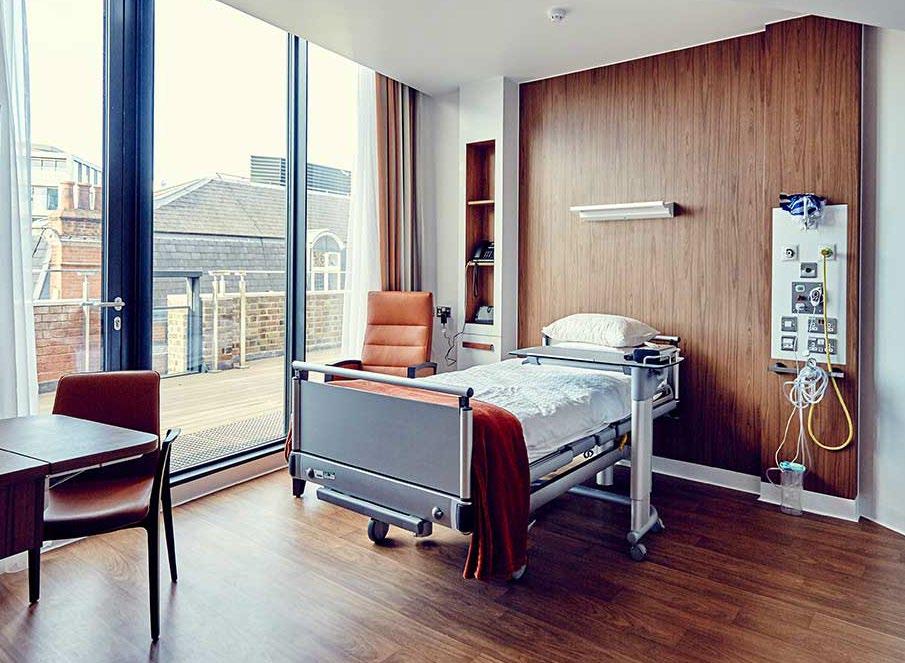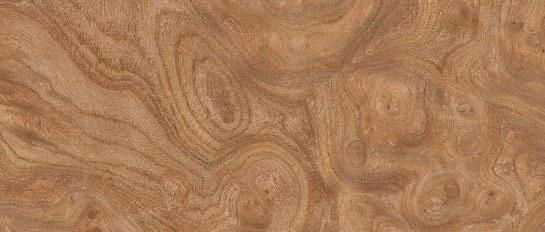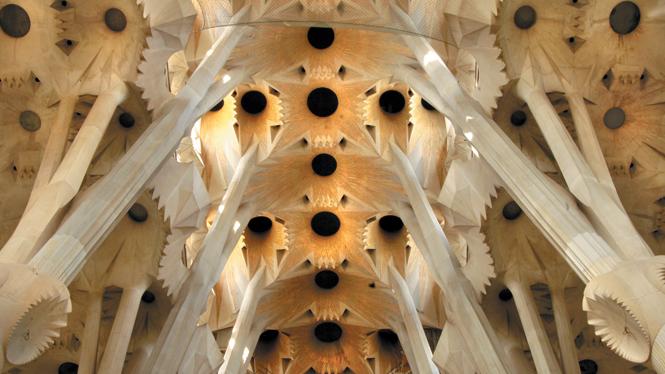
13 minute read
Chapter One: Biophilic experiences and their psychological impact on patients
Chapter One
Biophilic approaches and their psychological impact on patients
Advertisement
Introduction
The first chapter of this dissertation covers the direct, indirect and spatial links patients’ in hospitals have to the natural environment, and how these natural elements may facilitate a positive effect on patient mental wellbeing (Willson, 1993; Kellert, 1993; Ulrich, 1993; Evans, 2003; Joye, 2007; Kellert et al., 2011; Ryan et al., 2014; Salingaros, 2015; Gillis and Gatersleben, 2015; DuBose et al., 2018). According to Salingaros (2015, p. 6), ‘the best biophilic design, [is] design that effectively eliminates stress and anxiety from the built environment [and] is achieved by maintaining thoughtful connections with nature’. Through this review, this chapter explores the many ways biophilia can be introduced into built structures by architects and what must be considered in order to foster healing spaces. While a significant body of research exists concerning the resultant effects of implementing biophilia in architectural space, further research concerning implementation methodologies for architects is needed to foster these environments. Case studies of contemporary implementations will be examined in chapter three.
1.1 History
Biophilia is the human need to be connected to nature for psychological and physiological purposes (Willson, 1993; Evans, 2003; Joye, 2007; Ryan et al., 2014; Gillis and Gatersleben, 2015; Salingaros, 2015; DuBose et al., 2018). The term ‘biophilia’ was first used by Edward O. Wilson (1993, p. 40) in his 1984 book Biophilia. As Biophilia is a reasonably new term, its potential has not yet been fully discovered, however, it is evident that humans have been using biophilic elements for many years. According to Catherine O. Ryan et al. (2014, p. 63), biophilia ‘is the codification of human intuition for what makes a space a good place for humans’ .
According to Salingaros (2015, p.9), there are two ways human beings are subconsciously connected to nature. The first comes from our memory ‘from our evolution and development in the environment of the savannah long ago … The sophistication of our physical and mental development progressed over millennia without losing traces of the savannah in our inherited memory and instincts’ (Salingaros, 2015, p. 9). The second is our relationship to nature and how the geometries used within built environments cause us to relate to the visual elements as we share the same biological template (Salingaros, 2015, p. 9). In other words, we recognise artificial elements that have the same geometries to nature, this subconscious understanding of nature causes us to gravitate to these spaces.
There are many theorists, such as Salingaros, who believe architects rejected biophilia or used it sparing at the beginning of the 20th Century and it is only now that architects are starting to understand its
healing effects and thus employing biophilia again within their interior spaces (Salingaros, 2015, p. 20). However, Edwards (1993, p. 31-32) believes that ‘when human beings remove themselves from the natural environment, the biophilic learning rules are not replaced by modem versions equally well adapted to artifacts. Instead, they persist from generation to generation, atrophied and fitfully manifested in the artificial new environments into which technology has catapulted humanity’. Biophilia can be employed through the use of natural light, caring for plants, natural views, natural materials, ornamentation and spatial qualities.
1.2 Direct biophilic experiences
1.2.1 Natural light
There is much evidence that natural daylight within patient rooms affects their psychological state of mind (Verderber, 1983; Edwards and Torcellini, 2002; Evans, 2003; Barrett, 2009; Wirz-Justice and Fournier, 2010; Gillis and Gatersleben, 2015; Salingaros, 2015). More specifically, Paul Torcellini and L. Edwards (2002, p. 4), state that natural light ‘has been associated with improved mood, enhanced morale, lower fatigue, and reduced eyestrain’ within building occupants. Patients with little contact with natural light suffer from fatigue and sadness, with some suffering from clinical depression. Many patients, who have been hospitalised with chronic depression, recover faster in sunlit rooms than darker rooms (Evans, 2003, p. 541).
There are many ways natural light is psychologically beneficial to humans. Skin and eyes are two organs that require natural light (Salingaros, 2015, p. 10). These organs regulate circadian rhythms - internal clocks - by natural light (Salingaros, 2015, p. 10). Without natural light our circadian rhythm is disrupted which leads to chronic fatigue and loss of body function (Salingaros, 2015, p. 10). Another way natural light benefits mental wellbeing is the fact that it is a direct connection to the living environment outside (Edwards and Torcellini, 2002, p. 4). Patients are able to visually see the rays of light and are able to feel the warmth of the sun on their skin. According to Stephan Verderber (1983, p. 415), Professor of Architecture at the University of Toronto, natural light ‘offers a sense of spirituality, openness, and freedom from the prison-like confinements [that is a characteristic of] … windowless spaces’.
Natural light not only provides psychological and physiological benefits within patients’; it is also connected to clarity relating to depth perception and three-dimensional images which lets the patient analyse their surroundings (Salingaros, 2015, p. 10), allowing the patient to feel relaxed within the space. Natural light also has non-visual benefits that affect the patient's balance, body orientation and brain stimulation (Barrett, 2009, p. 11).
1.2.2 Caring for plants
The introduction of plants into an interior space is the simplest definition of biophilia. Indoor plants provide psychological benefits to hospital patients (Shibata and Suzuki, 2004; Gillis and Gatersleben, 2015; Salingaros, 2015; Rappe and Lindén, 2004; Qin et al., 2014)as plants ‘directly bring green, living nature into the indoor environment’ (Gillis and Gatersleben, 2015, p. 953). Indoor plants have no connection to the design of the built structure. Studies have shown that indoor plants beneficially affect patients' pain tolerance and mental stress (Gillis and Gatersleben, 2015, p. 953). Salingaros discusses the intimate connection between plants and humans and it is this connection that nourishes the patient (Salingaros, 2015, p. 13). He states that as humans we ‘crave the companionship of plants’ and that the simple interaction nurtures the user (Salingaros, 2015, p. 13).
A study in Finland, undertaken by Erja Rappeand Leena Lindén (2004), delved into the psychological benefits seen in dementia patients when they care for indoor plants - watering, fertilising and pruning. The results were that the plants helped patients recall memories, maintained the patient’s functional skills and made the patients more aware of time (Rappe and Lindén, 2004, p. 77). These effects all reduce stress felt by the patient. The results also showed a drop in the patient’s blood pressure a consequence of reduced mental stress (Rappe and Lindén, 2004, p. 77).
Psychological studies have also shown that there are specific plants that are most beneficial forreducing mental stress. One study, undertaken by Jun Qin, et al. (2014, p. 721), at the Shanghai Jiao Tong University in China, found that the most beneficial plants for reducing stress are green, have a light sent and are small in size.
1.2.3 Natural views
Views of natural environments are considered to be psychologically and physiologically healing (Ulrich, 1984; Ulrich et al., 1991; Ulrich, 1993; Evans, 2003; Edwards and Torcellini, 2002; Ryan et al., 2014; Salingaros, 2015; Gillis and Gatersleben, 2015). Many theorists, in particular, Ulrich, have undertaken studies on the mental and physical health benefits of different views from hospital rooms (Ulrich, 1984). According to Ulrich (1993, p. 90), views of looking down a grassy slope to green leafy plants, bodies of water and flowering plants reduced stress within patients, thus they recovered faster than those who had a view of the built environment. However, according to Ryan et al. (2014, p. 65), the most preferred view also consists of a hint of human inhabitation. These particular images on landscapes are ‘unthreatening … [thus] promote faster and more complete restoration from stress’ (Ulrich, 1993 p. 102). Results showed that patients had lower blood pressure, relaxed and less stressed psychologically and physically, all resulting in faster patient recovery (Edwards and Torcellini, 2002,
p. 4). Ulrich (1993, p. 90) has also found that only a short amount of time spent viewing nonthreatening natural scenes can provide relief from slight and severe stress.
According to Gary W. Evans(2003, p. 545), Professor of Human Ecology at Cornell University, suggest that these same mental benefits from natural views are also found when patients are able to view indoor plants and landscape artworks. Ulrich (1993, p.105) has also undertaken studies on the effects landscape artworks have on a patient’s mental wellbeing. According to Ulrich (1993, p. 105), ‘patients felt less stressed on days when a large mural depicting a spatially open natural landscape was hung on a wall of the waiting room in contrast to days when the wall was blank’. Leading us to believe that images of nature can also be used to improve mental welling in patients when it is not possible to provide them with a natural landscape view.
1.3
1.3.1
Indirect biophilic experiences
Materials
Introducing natural materials into an interior space is another biophilic method that influences a patient’s psychological state (Nyrud, Bringslimark and Bysheim, 2014; Gillis and Gatersleben, 2015). There is little information found on how and what natural materials influence a patient’s mental wellbeing (Gillis and Gatersleben, 2015, p. 955). However, there was one study undertaken that explored the amount of one natural material required to produce a result. This study, undertaken by Ander Q. Nyrud, et al. (2014), at a Norwegian hospital, only used wood as the natural material, as it has the most biophilic qualities – pattern and colour. As observed in [1, Fig. 1], the type of room that was most beneficial to a patient’s mental wellbeing was a room with a wooden floor, one wooden wall and wooden furniture (Nyrud, Bringslimark and Bysheim, 2014, p. 128). It was thought to have been the overwhelming amount of detail within the grain of the wood that caused patients to mentally react negatively to a room completely covered in wood (Nyrud, Bringslimark and Bysheim, 2013, p. 129). These details are called fractals.
Figure 1: Private patient room at Schoen Clinic (2018), London, United Kingdom
Fractals – ‘repeating patterns when viewed at increasingly fine magnifications’ (Hagerhall, Purcell and Taylor, 2004, p. 248) – are commonly seen within nature (Hagerhall, Purcell and Taylor, 2004; Ryan et al., 2014; Salingaros, 2015). Fractal geometries can be seen within materials used in buildings, such as the grain of stone and wood (Ryan et al., 2014, p. 68). An example of fractal geometry can be seen within the wood grain shown in [2, Fig. 2]. According to Salingaros(2015, p.28), the use of these natural materials with fractal geometry provides information through symmetry, patterns and order which in turn causes reduced mental stress within the viewer. The reason for this is due to the fact that ‘our
survival mechanisms are tuned to relax upon feeling the influence of certain patterns and symmetries characteristic of an accommodating environment’ (Salingaros, 2015, p. 28). Fractals within natural materials create details that need to be viewed at close distances so that the information from the most
minute details through sight and the texture of these details to be felt can be collected (Salingaros, 2015, p. 12), positively influencing psychological states.
Figure 2: English Wych Elm depicting blur grain fractals

1.3.2 Ornamentation
The use of biophilia to improve mental wellbeing can also be viewed within an artificial space through the use of ornamentation, which is often directly copied from nature (Joye, 2007; Gillis and Gatersleben, 2015; Salingaros, 2015). There are two forms of ornamentation – natural and abstract (Salingaros, 2015, p. 25). Although both are very different forms, they both positively reduce psychological stress (Salingaros, 2015, p. 25). Abstract ornamentation does not mimic nature however it does follow the elements of contrast, balance and detail seen within nature (Salingaros, 2015, p. 25).
According to Yannick Joye(2007, 314),some reasons as to why ornamentation can cause psychological benefits is because it is associated with nature, visual symbols of nature and geometry seen within nature. Salingaros (2015, p. 26) further explains this by stating ‘positive, healing response to our environment occurs whenever we perceive in our surroundings certain characteristics akin to the organized complexity of nature common to traditional ornament’.
Fractals that are seen within nature can also be applied to architecture to create a psychological healing environment and is generally viewed in historic buildings (Joye, 2007; Ryan et al., 2014; Gillis and Gatersleben, 2015; Salingaros, 2015). According to Salingaros (2015, p. 12), humans expect to observe fractal details within artificial spaces, thus, the lack of detail within a space causes us to view the space as ‘chaotic’, and not easily understood or read; as a result stress levels are heightened. An example of biophilic ornamentation can be seen in Antoni Gaudı’s (1856 - 1926) Basílica de la Sagrada Família (not completed), Barcelona, Spain [3, Fig 3], where the fractals on the ceiling becomes a leafy canopy and the columns sybolise tree trunks.
Figure 3: Ceiling of Antoni Gaudı’s Basílica de la Sagrada Família (not completed), Barcelona, Spain

According to Ryan et al. (1983, p. 170), fractals that are generated in nature have a fractional dimension of 1.3 to 1.8 (fractal dimensions measure the complexity of the line (how many angles the line has) and generally for plane fractals this dimension lies between 1 and 2 (Joye, 2007, p. 315; Ryan et al., 2014, p. 68). According to Christopher Alexander, these forms that copy complex organisation and geometric properties of living plants are ‘living structure[s]’ (Salingaros, 2015, p. 25).
1.4 Spatial biophilic experiences
1.4.1 Spatial qualities
Spatial connection to nature provides psychological healing qualities (Gatersleben and Andrews, 2013; Gillis and Gatersleben, 2015; Salingaros, 2015). Spatial qualities that are considered biophilic are forms, spaces, and structures that can be seen universally in nature (Salingaros, 2015). Biophilia can also be introduced into artificial spaces through the use of prospect and refuge- clear lines of vision and concealment (Gillis and Gatersleben, 2015, p. 956).
A study was undertaken by Birgitta Gatersleben (2013), Senior Lecturer in School of Psychology at the University of Surry and Matthew Andrews (2013), which examined the different natural environments and their psychological healing effects on the user. These environments consisted of different levels of prospect and refuge (Gatersleben and Andrews, 2013). This can be seen within spaces in many different ways, however one example is sitting or standing with ones back against a wall and having a view to the rest of the room or raised above other points in the building. The results were that ‘environments with high levels of prospect and low levels of refuge [are] more restorative because they demand less attention to find one's way, to identify possible dangers or to avoid tripping over. Such an environment is associated with less threat and fear’ (Gatersleben and Andrews, 2013, p. 99), thus reducing mental stress. Such spaces are called medium prospect and refuge spaces (Gatersleben and Andrews, 2013). An example of medium prospect and refuge within nature can be seen in [4, Fig. 4).
Figure 4: Medium prospect and refuge, forest in spring, United Kingdom

According to Catherine O. Ryan et al. (2014, p. 69), prospect views must be a ‘minimum of 6 meters and … incorporate information-rich prospect view[s] by designing with or around an existing or planned savannah-like ecosystem, body of water, and evidence of human activity or habitation’.
Conclusion
This chapter has explored the many ways architects can introduce biophilia into the built environment in order to create healing qualities. These natural and architectural elements have been reinforced through the use of studies and theories throughout this chapter. According to Salingaros, biophilic architecture is recognised within humans, however, today's education rejects it due to the fact that the designs ‘look old-fashioned’ (Salingaros, 2015, p. 34). Thus is it important to bring biophilic design into the light as architscts must ustilise these biophilic experience in order to create ethical spaces that benefit the user. Architects must push back against the old fashioned ideas in responce to new research. These ideas - scientific, political and human centred influences will be further ecxplored within chapter
two.




